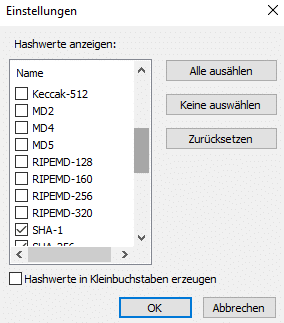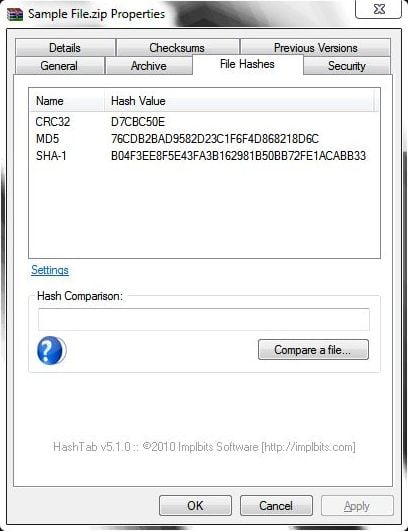

If two files have the same contents then it is guaranteed they will have the same SHA-1 hash value. You may alternatively select the SHA-1 hash value from the 'Calculate Hash Value' sub-menu:Īn SHA-1 hash value is a 40-character string that identifies the contents of a file. Here's the resulting window for the MD5 Hash Value: If two files have the same contents then it is extremely probable they will have the same MD5 hash value. Sometimes external sources like websites may only provide a particular hash value to compare against.Īn MD5 hash value is a 32-character string that identifies the contents of a file. Note that different hash values will have different probabilities of confirming an exact match. A sub-menu also appears showing the types of Hash Values that can be calculated. On the right panel a text file called Example has been right clicked with the mouse button, and the menu item Calculate Hash Value has been selected from the pop-up menu.
#Hashtab window windows#
The example below shows how Windows File Explorer has been used to browse the Documents folder. Windows File Explorer will now open showing your folders, files, and connected drives etc. Select File Explorer :Īlternatively you may wish to quickly open Windows File Explorer by pressing the Windows and E keys: Open Windows File Explorer by right clicking the Windows logo (previously the Start button). Windows File Explorer lets you browse and select any file or folder on your local computer, as well as showing the files and folders on connected devices like CD, DVD, USB External Drives, Memory Sticks etc. You can then copy the data to the clipboard, for pasting in another application, or save the results to a file.ĭetailed Explanation (Windows File Explorer)


The values will then be calculated and displayed. In Windows File Explorer select the files you want the hash values calculated for, click the right mouse button, and select Calculate Hash Value, then select the appropriate hash type from the pop-up sub-menu (e.g. First we’ll explain the simplest way to use it: via Windows File Explorer.īrief Explanation (Windows File Explorer) HashOnClick is very simple to use, and can be used via a context menu item in Windows File Explorer, via the Property Sheet for a file or via the command prompt.


 0 kommentar(er)
0 kommentar(er)
